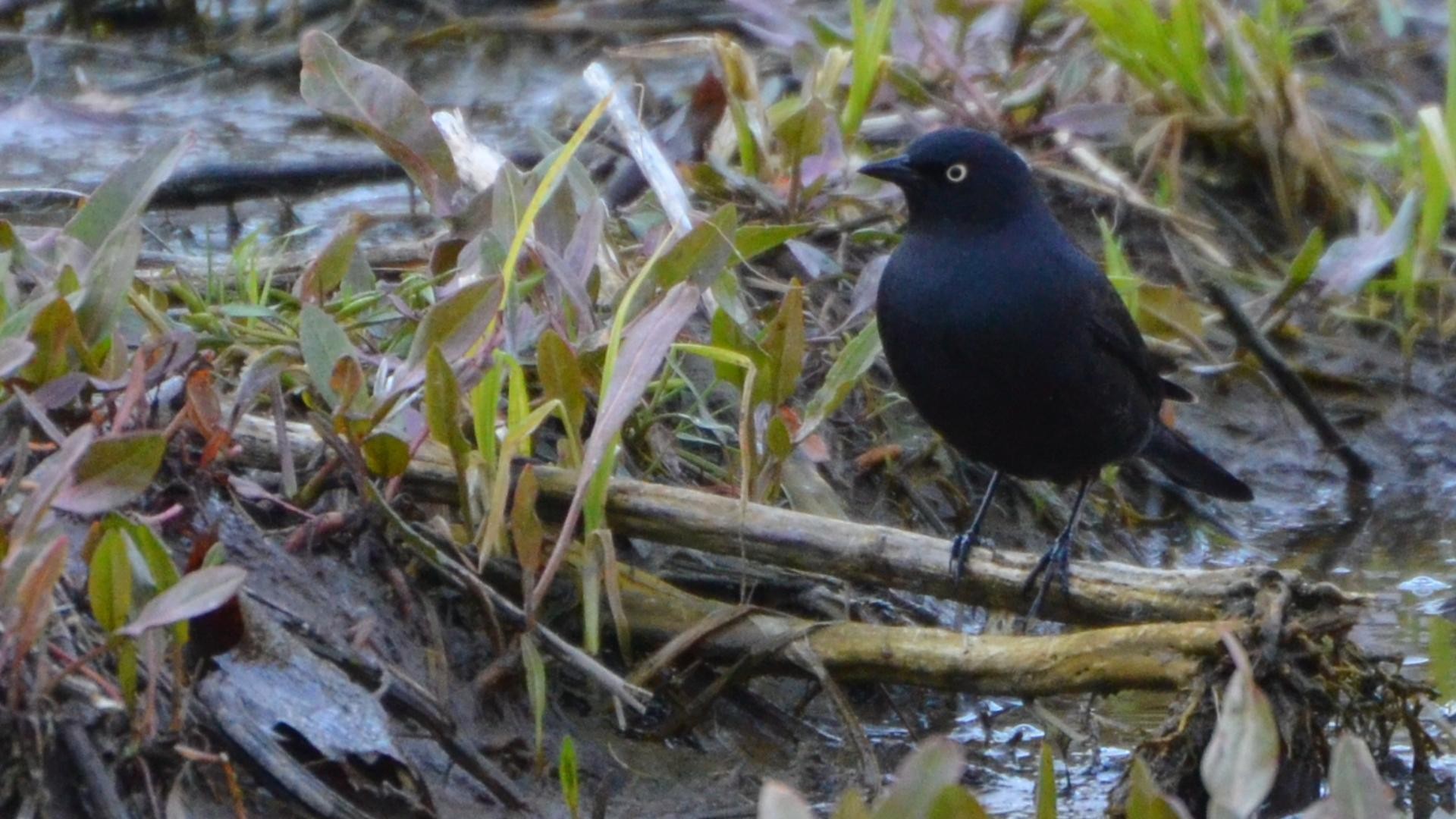Rusty Blackbird
A species of Rusty and Brewer'S Blackbirds Scientific name : Euphagus carolinus Genus : Rusty and Brewer'S Blackbirds
Rusty Blackbird, A species of Rusty and Brewer'S Blackbirds
Botanical name: Euphagus carolinus
Genus: Rusty and Brewer'S Blackbirds
Content
Description People often ask General Info
 Photo By Andy Reago & Chrissy McClarren , used under CC-BY-2.0 /Cropped and compressed from original
Photo By Andy Reago & Chrissy McClarren , used under CC-BY-2.0 /Cropped and compressed from original Description
Adults have a pointed bill and a pale yellow eye. They have black plumage with faint green and purple gloss; the female is greyer. "Rusty" refers to the brownish winter plumage. They resemble the western member of the same genus, the Brewer's blackbird; however, Brewer's has a longer bill and the male's head is iridescent green. 
Size
21-25 cm (8.25-9.75 in)
Colors
Brown
Black
Bronze
Gray
Life Expectancy
9 years
Nest Placement
Tree
Clutch Size
3 - 6 eggs
Feeding Habits
Rusty Blackbird's diet varies seasonally; during summer, it primarily consumes insects, while in winter, it shifts to acorns, pine seeds, and fruit. This bird mainly feeds on insects and seeds.
Habitat
Rusty Blackbird predominantly resides in wet woodlands and muskeg in the boreal zones of Canada and Alaska. This species thrives at low altitudes in temperate climates, preferring forest edges near ponds or wetlands. Vegetation types include dense shrubberies and conifers, often used for nesting. During winter, rusty Blackbird migrates to the southeastern U.S., inhabiting swamps, wet woodlands, and areas near ponds, with a dietary reliance on aquatic insects like dragonfly larvae.
Nest Behavior
During nesting season, rusty Blackbird builds its nests and lays eggs in close correlation with the availability of water-influenced habitats. Parental care involves both parents attending to the eggs and young, with a strong emphasis on protecting and feeding their offspring until they fledge.
Nest Characteristics
Rusty Blackbird's nest is a bulky bowl-shaped structure with an outer layer composed of twigs, grass, and lichens. It incorporates wet, rotting plant matter that subsequently dries and hardens, and it is typically situated in trees and shrubs close to water sources.
Dite type
Insectivorous
People often ask
General Info
Feeding Habits
Bird food type
Sounds
Call
Recording location: United States
Song
Recording location: United States
Behavior
Rusty Blackbird predominantly forages on the ground, frequently seen in both small and large flocks, indicative of their social nature. These birds actively wade in shallow waters, making them common near wetlands. A distinct foraging behavior includes their tendency to flip over leaves and twigs in search of food. This flipping technique in combination with their habitat preferences highlights their adaptability in securing varied food sources from their environment.
Species Status
Not globally threatened.

 Photo By Andy Reago & Chrissy McClarren , used under CC-BY-2.0 /Cropped and compressed from original
Photo By Andy Reago & Chrissy McClarren , used under CC-BY-2.0 /Cropped and compressed from original